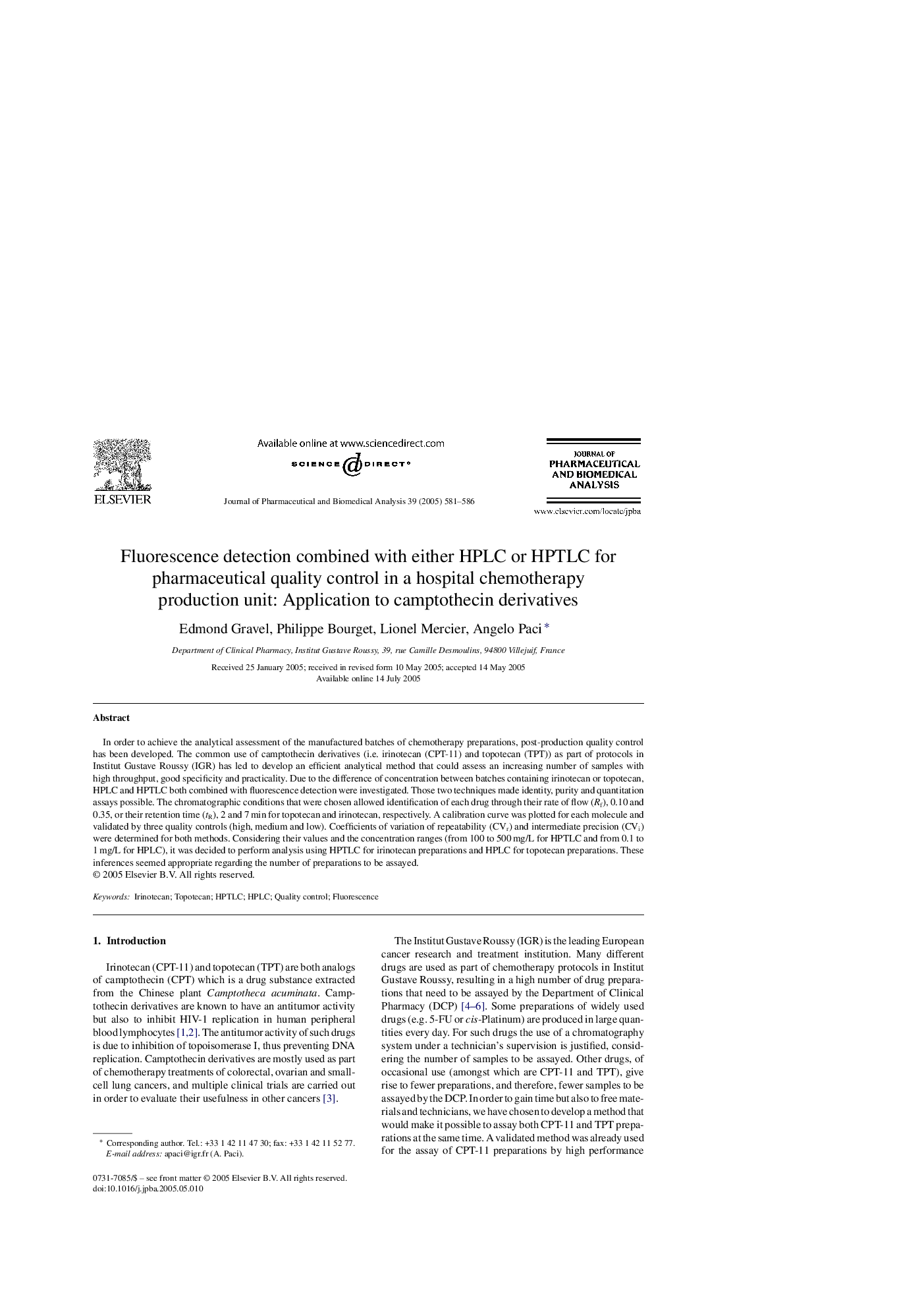| Article ID | Journal | Published Year | Pages | File Type |
|---|---|---|---|---|
| 9754431 | Journal of Pharmaceutical and Biomedical Analysis | 2005 | 6 Pages |
Abstract
In order to achieve the analytical assessment of the manufactured batches of chemotherapy preparations, post-production quality control has been developed. The common use of camptothecin derivatives (i.e. irinotecan (CPT-11) and topotecan (TPT)) as part of protocols in Institut Gustave Roussy (IGR) has led to develop an efficient analytical method that could assess an increasing number of samples with high throughput, good specificity and practicality. Due to the difference of concentration between batches containing irinotecan or topotecan, HPLC and HPTLC both combined with fluorescence detection were investigated. Those two techniques made identity, purity and quantitation assays possible. The chromatographic conditions that were chosen allowed identification of each drug through their rate of flow (Rf), 0.10 and 0.35, or their retention time (tR), 2 and 7Â min for topotecan and irinotecan, respectively. A calibration curve was plotted for each molecule and validated by three quality controls (high, medium and low). Coefficients of variation of repeatability (CVr) and intermediate precision (CVi) were determined for both methods. Considering their values and the concentration ranges (from 100 to 500Â mg/L for HPTLC and from 0.1 to 1Â mg/L for HPLC), it was decided to perform analysis using HPTLC for irinotecan preparations and HPLC for topotecan preparations. These inferences seemed appropriate regarding the number of preparations to be assayed.
Related Topics
Physical Sciences and Engineering
Chemistry
Analytical Chemistry
Authors
Edmond Gravel, Philippe Bourget, Lionel Mercier, Angelo Paci,
